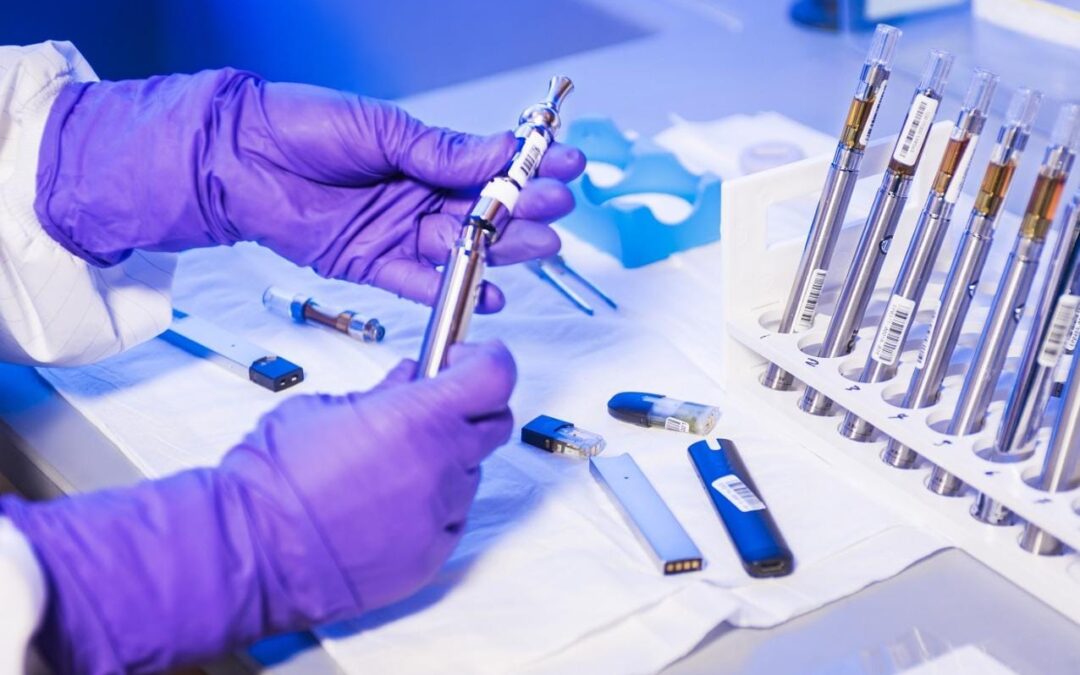Come afferma l’Organizzazione Mondiale della Sanità “La sigaretta elettronica è e rimane una sigaretta”.
Chiamata anche e-cig, si tratta di una novità sempre più diffusa che è considerata da molti come meno dannosa rispetto alle sigarette tradizionali.
È un apparecchio con il quale si inala vapore; una miscela di acqua e sostanze potenzialmente dannose: metalli (nichel, argento, titanio), glicerolo e glicole propilenico, quest’ultimo anche se generalmente sicuro, se inalato per lungo tempo può causare irritazioni delle vie aeree e tosse.
Nella maggior parte delle sigarette elettroniche è presente la nicotina, causa di dipendenza, che le accomuna a quelle tradizionali, anche se le dosi sono differenti. La concentrazione massima di questa sostanza, come regola la direttiva del tabacco, non deve superare i 20mg/ml in flaconi di 10ml.
La direttiva del tabacco stabilisce le norme che riguardano la lavorazione, la presentazione e la vendita di questi prodotti, così da garantire la sicurezza dei cittadini.
Le sigarette elettroniche si distinguono da quelle tradizionali soprattutto grazie agli svariati aromi, o “gusti”, che si possono dare al vapore. Si và dai più classici, come la menta, a quelli più particolari che ricordano frutta o dolci particolari come il caramello. Una delle sostanze che però viene utilizzata per darne gusto è il diacetile, lo si trova facilmente nel burro ed è sicuro da ingerire, mentre è causa di bronchiolite se inalato.
La fama delle sigarette elettroniche aumenta sempre di più tanto che di recente sono sorti dei nuovi dispositivi:
si tratta di sigarette elettroniche usa e getta, pronte all’uso dai gusti più curiosi, contengono un liquido ai Sali di nicotina precaricato; è utilizzato un trattamento chimico, differente da quello della classica e-cig, che rilascia la nicotina più rapidamente nell’organismo, avvicinandola di più ad una sigaretta tradizionale.
La direttiva per i prodotti del tabacco però non viene sempre seguita e molti modelli di quest’ultima novità sono stati bloccati al Safety Gate, il sistema di allarme rapido dell’Unione europea. Le autorità nazionali inviano al sistema delle segnalazioni e tra queste quelle che riguardano le sigarette elettroniche usa e getta sono varie, la ragione è la quantità troppo alta di nicotina che, a concentrazioni elevate, può essere tossica nonché dannosa per la salute.
Le sigarette elettroniche riducono in parte l’esposizione a composti tossici e cancerogeni, perché rispetto a quelle tradizionali non includono la combustione del prodotto, ma tutto ciò è sufficiente per ritenere questi dispositivi un aiuto per chi vuole smettere di fumare e quindi benefiche rispetto alle sigarette tradizionali?
-eng-
E-CIG – HELP OR DANGER?
As the World Health Organization states “The electronic cigarette is and remains a cigarette”
Also called e-cig, this is an increasingly widespread novelty that is considered by many to be less harmful than traditional cigarettes.
It is an apparatus with which steam is inhaled; a mixture of water and potentially harmful substances: metals (nickel, silver, titanium), glycerol and propylene glycol, the latter although generally safe, if inhaled for a long time can cause airway irritation and coughing.
In most electronic cigarettes there is nicotine, a cause of addiction, that unites them to the traditional ones, even if the doses are different. The maximum concentration of this substances, as a rule in the Tobacco Directive, should not exceed mg/ml in bottles of ml.
The Tobacco Directive lays down rules on the processing, presentation and sale of these products in order to ensure the safety of citizens.
The electronic cigarettes are distinguished from the traditional ones mainly thanks to the various aromas, or “tastes”, that can be given to the steam. It goes from the most classic, such as mint, to the most particular ones that remind fruit or special desserts such as caramel. One of the substances that is however used to give taste is diacetyl, it is easily found in butter and is safe to shallow, while it is a cause of bronchiolitis if inhaled.
The fame of electronic cigarettes is increasing so much so that recently new devices have emerged:
These are disposable electronic cigarettes, ready for use by the most curious tastes, containing a liquid with preloaded nicotine salts; a chemical treatment is used, different form that of the classic e-cig, which releases nicotine more quickly into the body, closer to a traditional cigarette.
However, the directive on tobacco products is not always being followed, and many models of the latter have been blocked at the Safety Gate, the European Union’s early warning system. The national authorities send to the system of alerts and among these those concerning disposable electronic cigarettes are various, the reason is the too high amount of nicotine that, at high concentrations, can be toxic as well as harmful to health.
Electronic cigarettes partially reduce exposure to toxic and carcinogenic compounds, because compared to traditional cigarettes they do not include the combustion of the product, but is all this enough to consider these devices a help for those who want to quit smoking and therefore beneficial compared to traditional cigarettes?
-fonti-
https://www.fondazioneveronesi.it/magazine/articoli/fumo/cosa-ce-nelle-sigarette-elettroniche
https://ec.europa.eu/safety-gate-alerts/screen/webReport/alertDetail/10006711?lang=en

